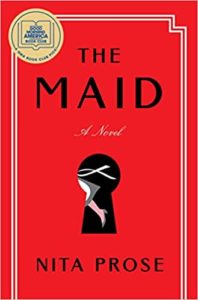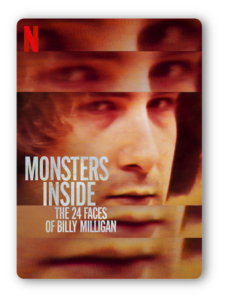The 10 Stages of Mental Health and Happiness
As I emerged from that second bout of severe depression, I began a journal, recording my recovery with an OCD attention to detail. I made entries into my journal about every three hours. I recorded not only what I was doing and eating, how I was sleeping, and how I “felt” at each three-hour interval, but also my thoughts, actions, and activities, and how well I was able to think and communicate and perform tasks.
Thus, my journal became a document I could use to understand what I was going through. It helped me understand, for one thing, that my thoughts, feelings, and functionality were always in a state of mild flux. There were ups and downs, even if they were subtle. This was an exciting discovery for me, because it meant that, however badly I was doing, there was chance of at least some relief. And when the pain is severe, even some relief is a great help.
To make note of those fluctuations, I began rating my thoughts, feelings, and functionality on a scale of 1 to 10. This helped me notice differences I might not have been able to notice before.
After some months of keeping my “brain health” journal, I shared it with K, who was justifiably worried and confused about what had happened to me.
Sharing it with her was a good move. It gave us a way to talk about the illness in a way we both understood. And since then, I’ve come out of the closet about my depression to an increasingly wider group of people. I have also shared my system with a psychiatrist and psychologist that were treating me. And they have used it to treat other patients of theirs.
What I like most about this system is that it solves a problem most of us have when speaking about depression: the impulse to describe the experience in terms of feelings. As in, “On a scale of 1 to 10, how bad does it feel?”
This tendency to focus too much on feelings was even true with the professionals I worked with at the time. Almost all of their questions were about either the severity of the feelings themselves or how they might have been triggered in my subconscious mind.
These conversations were – from the outset – unsatisfactory. I knew, instinctively, that I had to find a more objective way to talk about what I had experienced. Unless the conversation was more exacting, the solution – if there was one – would be impossible to find.
And that’s how my obsessive documentation saved me. In reviewing and cross-referencing the hundreds of pages I had written, I was able to see that my depression manifested itself in three specific ways. How I was feeling. How I was thinking. And how I was functioning, in terms of comprehension, communication, and performing tasks.
I also noted that these three aspects of my experience changed in lockstep with one another. When I was feeling very bad, I was also thinking unclearly and functioning poorly. When I was feeling good, I thought clearly and performed well. In retrospect, that seems obvious. But it turned out to be very helpful. It meant that I could create a rating system that could accurately and comprehensively “rank” my mental health.
What I came up with was a 10-point system, with the top and bottom levels imagined, since I had no experience of either. Level 10 was perfect euphoria – perfection of feeling, thought, and function. Level 1 was total pain – the unbearable pain just before suicide. In between were all the gradations that I was going to track.
As I began to track them, I began to notice some other interesting things. For example:
* I was rarely at the same exact level throughout an entire day. My rankings changed to some degree, even if nothing else changed. Sometimes I’d feel a little better. Sometimes I’d feel a little worse.
* If my circumstances changed or I changed something I was doing, my rankings could change more dramatically. It was possible, for example, to move from a 6.5 to a 7 in an hour, or from a 6 to an 8.5 in a day.
* The range of change varied depending on my starting level. If I were in the lower levels (below 5), it was difficult to move up more than a single point in a day. However, if I started at a 6, I could get to an 8 or an 8.5.
Most importantly, perhaps, I discovered that the effectiveness of therapeutic options varied greatly depending on my level.
Meditation, for example, was helpful at Level 6 or above. As were ice baths, exercise, and a host of other popular antidepressant strategies. But at Level 5, these things had little to no effect, if I could even get myself to do them. Below Level 5, I simply couldn’t.
In analyzing my ability to function at various levels, I noted all sorts of additional things. I found, for example, that I could read with comprehension at Level 5, but not at 4.
By including functionality in my rating system, I was able to make it into something that I could not only use to communicate clearly with others, but that others could use. I had created a language and a calculus about depression that was reliable, objective, and universal.
The 10 Levels
The Bottom 3: Blackness, muteness, incomprehension, severely limited functionality
Level 1 (Triple Black) – This is the stage just before suicide. As I said, I have not experienced it, but I imagine it to be like this: You are in extreme pain. And terrified. The pain is so bad you feel you cannot live another moment. Death is not scary. It is welcome. And you have, by some stroke of luck, the ability to take it.
Level 2 (Double Black) – You are physically exhausted. Your body aches. You are in what seems like unbearable mental pain. But you bear it. You can barely move. And you cannot think. Instead of cognition, a blur of fearful thoughts run constantly through your mind. You cannot speak. Not even the shortest sentence. And when others speak to you, you cannot understand what they are saying. You want to slip into unconsciousness.
Level 3 (Black) – You are physically and mentally exhausted. You cannot think coherently. The thoughts you have are nonsensical and disturbing. You cannot speak except to express your basic needs. You want to be left alone, or, at best, in the company of someone that is mute but attends to your basic needs. You cannot read. You cannot write. You cannot watch TV. You find it difficult to look others in the eyes. You can do some limited mental activities, like playing solitaire. But you cannot play games that require thinking, such as chess, poker, or bridge. And you cannot do any form of exercise. Each minute feels like an hour of suffering. You long for unconsciousness.
Levels 4 and 5: Impaired comprehension and minimal functionality
Level 4 (Dark Gray) – You are physically and mentally exhausted. You wake up feeling anxious and sad. You can get up from your bed to go to the bathroom and to eat, but you cannot leave the house. Any effort beyond that seems insurmountable. Your mind keeps gravitating towards dark thoughts and feelings. You can understand it when someone speaks to you, but you don’t care about what is being said. You can watch TV, but you cannot enjoy it. You can read, but you cannot keep track of what you are reading.
Level 5 (Gray) – You wake up feeling deeply sad and tired. You have the energy to get out of bed, to dress, and to go out into the world, but you don’t want to. You can speak and you can listen with comprehension, but you don’t care to speak and don’t care about anything that is said to you. You can watch TV and you can read, but without interest. You can push yourself to go outside, go to work, and even attend social events. But when you are in the presence of others, you don’t have the ability to engage in any meaningful way. Nor can you hide your depression. However hard you try to fake a normal mood, you fail. Others are constantly asking you what is wrong. You can work, but your output is minimal and mediocre, at best. You recognize that you feel considerably better than you did when you were at Level 4, but you are fearful that you may drop back down and become dysfunctional again.
Levels 6 and 7: Sad to Neutral
Level 6 (Light Gray) – You wake up with a minimum amount of energy. You feel sad. You feel anxious. You have no ambition. There is a faint disturbance in the background of your mind. But you are not afraid of what you have to do – your work, your exercise, and even your social obligations – because you are hopeful that you will soon start feeling better. And so, you head out into your day, doing what you normally do, and putting on a good face. A big difference between Level 5 and Level 6 (perhaps the defining difference) is that you push yourself to act “normal” and fool those around you into seeing you as normal. You can function normally, but not optimally.
Level 7 (Neutral) – You wake up feeling fine. Not super-charged, but with reasonable energy and ready to go. Your thinking is clear. Your judgement feels sound. You are confident, but not overconfident. And you can function at a good to very good level, regardless of what you are doing. You assume that you will feel this well all day, and you usually do. This is the level of most mentally healthy people most of the time. I think of it as the invisible level, because you are not conscious of your mood or your feelings when you are in the 7s. It’s just you.
Levels 8 and 9: Positive feelings, creative thoughts, and a high level of functionality
Level 8 (Blue) – You wake up energized and eager to get on with the day. You are happy to work, and you work at a very productive level. Brilliant new ideas are popping into your head. Reading is rewarding. TV is entertaining. You are happy to exercise, and you exercise with vigor. You enjoy the company of others, and look forward to social obligations. You are willing – eager – to take on new responsibilities and you feel optimistic about your future. In the higher ranges of Level 8 (8.5 to 8.9), your enthusiasm and self-confidence may negatively affect your judgement.
Level 9 (Yellow Fire) – You feel great, physically and mentally. You think, literally, “It’s so good to be alive!” You want to do more of everything in your life – work, hobbies, sporting activities, social engagements, etc. You feel confident that you can succeed at everything and that good things will come to you. You have no worries or doubts. You are feeling so good that you maybe be insensitive to and even offensive to others. If you don’t check yourself, you will likely get yourself into trouble of some kind.
Level 10: Euphorically dysfunctional
Level 10 (White Fire) – This, again, is a level I’m imagining, since I have never experienced it. You are on cloud nine. If there is a heaven, this is what it must feel like. Your state of well-being is so elevated that you do not, perhaps because you cannot, do anything but lie down and enjoy it.
When I first developed this system, it had 10 degrees and I was using just 10 degrees. But as time passed, that was too blunt a metric to represent changes I could detect during the course of the day. So, I doubled the marks by adding half points: 5.5, 6.5, and so on. Eventually, I felt like I could distinguish my levels more precisely than even that, so now I use a full decimal system. I can’t say that I can notice a difference between single decimal points, but I do feel that I can distinguish between, say, 6.8 and 7.0, or 7.8 and 8.0.
In discussing depression with professionals, reading about it, and from observation, I believe that mentally healthy people spend their days within a range of about 6.5 to 8.5.
Most people rarely drop below Level 6. For them, Level 6 feels like depression. But for someone who has experienced the 2s and 3s, it is – and feels – mentally healthy.
A notable difference between Level 5 and Level 6 is that, at 6, you can hide your feelings from others. You can fake it. At 5, you cannot. However hard you try, people will be asking you, “What’s wrong?”
Some mentally healthy people occasionally drop into the 5s. And the symptoms of Level 5 are such that one could be said to be clinically depressed at that stage. I’m not arguing with that. Except to say that most of the time, when mentally healthy people hit the 5s, they emerge from them quickly and without medication.
Levels 2,3 and 4 are very deep and very serious. I would consider them life-threatening – like one might consider some stages of cancer life-threatening. At these levels, none of the popular, self-initiated therapies work. At Level 4, you cannot do most of the recommended therapies for depression. It is only with Levels 5 and 6 that they can help. If you are below Level 4, the only thing that can help you is a change in your biochemistry, whether that happens through drugs or some spontaneous, natural quirk in your hormone system.
I’ll talk more about what I’ve discovered about therapies for depression another time. For the moment, I hope my rating system will be helpful for you or someone you know.
Interesting
8 Famous People That Battled Depression
- Isaac Newton
- Franz Kafka
- Vincent Van Gogh
- Abraham Lincoln
- Georgia O’Keeffe
- Sigmund Freud
- Ludwig Von Beethoven
- Winston Churchill

 MarkFord
MarkFord


